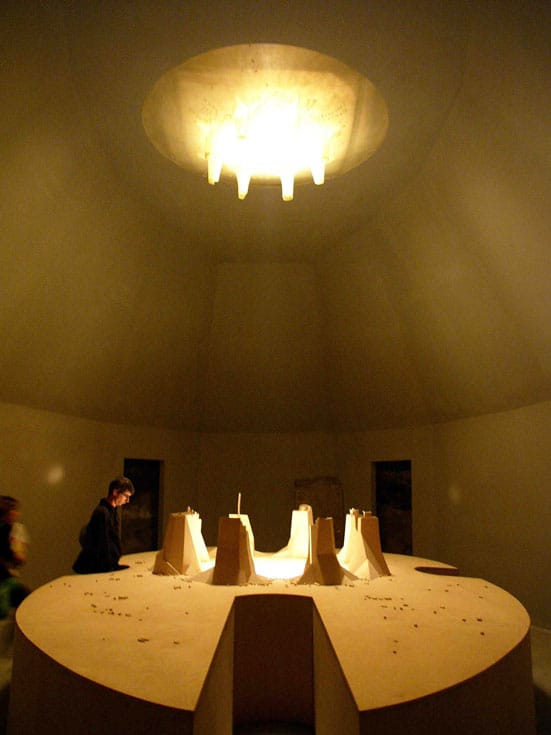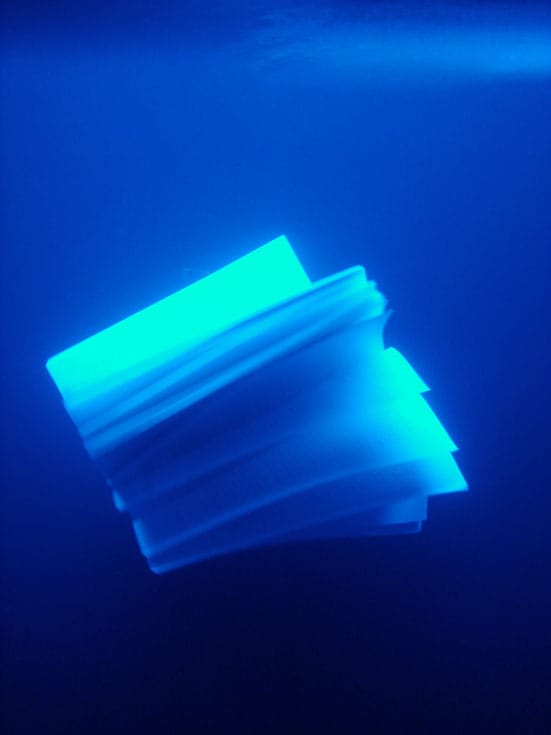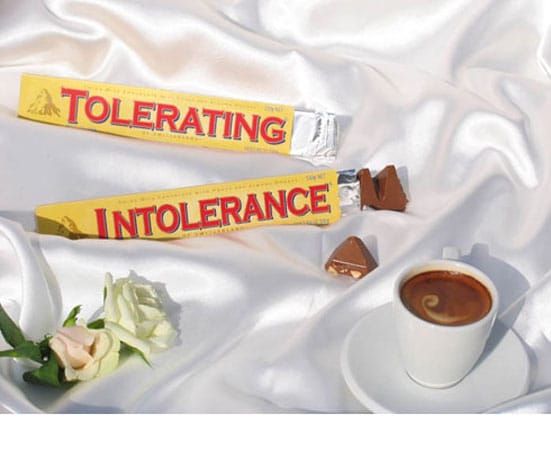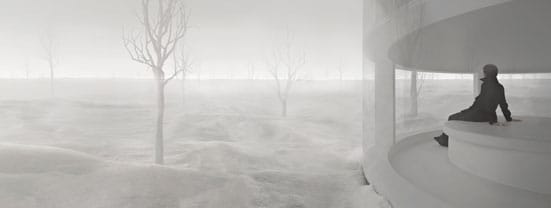In 2007, the planets aligned for the 52nd Venice Biennale, documenta 12, and skulptur projekte münster; the European Grand Tour that led to an even grander collective art world carbon footprint. It’s only fair then, that 2008 see the skies filled with collectors, curators, artists and critics travelling eastwards. No less than nine biennales and triennales are occurring in the Asia Pacific region from Korea, Taiwan, China, Japan, Australia and Southeast Asia’s very own contribution in Singapore.
Continuing on in the spiritual/mystical theme of Belief from the first edition in 2006, Wonder, the 2nd Singapore Biennale, provides a platform for human awe, surprise and marvel in a world jaded by the media. The Biennale once again has Fumio Nanjo, Director of the Mori Museum, Tokyo leading the charge. ‘Wonder’, Nanjo states, is the ‘aperture to explore the world’ and much of the work is aesthetically beautiful, powerful and show stopping in all its possibilities. However with a four-page list of sponsors that would make any arts institution delirious with envy it’s hard to check all cynicism at the door.
Singapore is undergoing monumental urban development and regeneration. Internationally it is known for its buoyant economy, low crime and unemployment rates, clean streets and clinical atmosphere. Its prosperity, a result of militant political regulation and meticulous urban planning has turned Singapore into a modern, global city. The Biennale therefore is so ingrained in this continuing strategy that it is hard to extricate any meaning outside of the powerful grip of ‘Progress’. The three sites of the second biennale are all part of this grand plan of urban renewal. The Old City Hall will become Singapore’s National Art Gallery in 2013 and the South Beach Development (an Art Deco styled ex-army camp) is being restored and redeveloped by giant property companies. The Containart Pavilion designed for the biennale by Japanese architect Shigeru Ban is situated in the heart of the third main biennale site: the Marina Bay Development which will integrate the nearby business district with soon to be built hotels, convention centres, casinos and leisure facilities. It is not surprising then that it plays host to the most spectacular and ambitious works of the biennale: light installations by Anthony McCall, a snowy landscape observatory by Hans Op de Beeck and the utopian dreams of Ilya and Emilia Kabakov And lest not forget that the sites of the biennale have all been coordinated to reflect the map of the Singapore Formula One that happened in September this year. The planning of such major international events in tandem with the converging of the rich and influential is no happy coincidence and echoes the timing of the IMF summit during the last Biennale.
Curatorially however, the Biennale is about letting go of cynicism in favour of a return to childhood innocence, to be touched and amazed by the everyday and ultimately the spirit of mankind. However, what is lacking is a more coherent questioning of what wonder actually means in contemporary society and juxtapositions of the playful and whimsical with politicised works about identity and history seem to cancel one another due to the Biennale’s impossibly optimistic and idealistic curatorial rhetoric. There is little for to be profoundly moved by, and rewards only come once one stops scrutinising curatorial and marketing goals and simply allows pleasure to be taken from the surprise of the unfamiliar twists and turns along the way.
Individual highlights include Ki-Bong Rhee’s installation Bachelor – The Dual Function of Body; a suspension of Wittgenstein’s book Tractatus Logico-Philosophicus, into an aquarium filled with water which is a haunting, hallucinogenic installation. The leather pages float in a small sea of royal blue hinting at the juncture between philosophy and spirituality as well as the never-ending pursuit for the meaning of life. Argentianian photographer and film-maker Charly Nijensohn’s El naufragio de los hombre (The wreck of men) combines moving image with politics and beauty. Choosing isolated figures from a local community threatened by poverty in the salt desert of Salar de Uyuni in Bolivia Nijensohn has situated them in majestic landscapes during the rainy season where flooded areas create mirrored images with the sky to become pure visual decadence. Iranian Farhad Moshiri and Shrin Aliabadi’s Operation Supermarkets are photographs of everyday cleaning products and breakfast cereals with their brand names replaced with loaded statements such ‘tolerating intolerance’ and ‘families ask why’. Srinivasa Prasad’s apocalyptic I Wonder Why fire and brimstone installation and Dinh Q. Le with Ha Thuc Phu Nam and Tuan Andrew Nguyen’s installation and film The Farmers and the Helicopters looking at the symbolic and practical significance of helicopters in Vietnam’s past and future all inject a healthy dose of political reality that counterbalance the more playful and whimsical pieces.
With its reduced budget the 2nd Singapore Biennale is more realistically produced than the first. Ultimately the important thing here is that a professional international biennale is occurring in the region. Southeast Asia needs to nurture public perception of contemporary art through greater exposure. So hopefully the Biennale will lead to improved recognition and professionalization of art world practices in the region and more international exchange. The mixture of regional and international audiences from tourists to corporate executives that flood to Singapore either for the Biennale, F1, business or just a holiday will undoubtedly be impressed and this confidence can only benefit a region in desperate need of a more coherent and efficient arts infrastructure.
Eva McGovern

Ilya & Emilia Kabakov - Manas, 2007
Courtesy of the 2nd Singapore Biennale

Kibong Rhee - Batchelor- The Dual Body, 2003
Courtesy of the 2nd Singapore Biennale

Farhad Moshiri & Shirin Aliabadi - Tolerating Intolerance, 2008
Courtesy of the 2nd Singapore Biennale

Hans Op de Beeck - Location, 2008
Courtesy of the 2nd Singapore Biennale